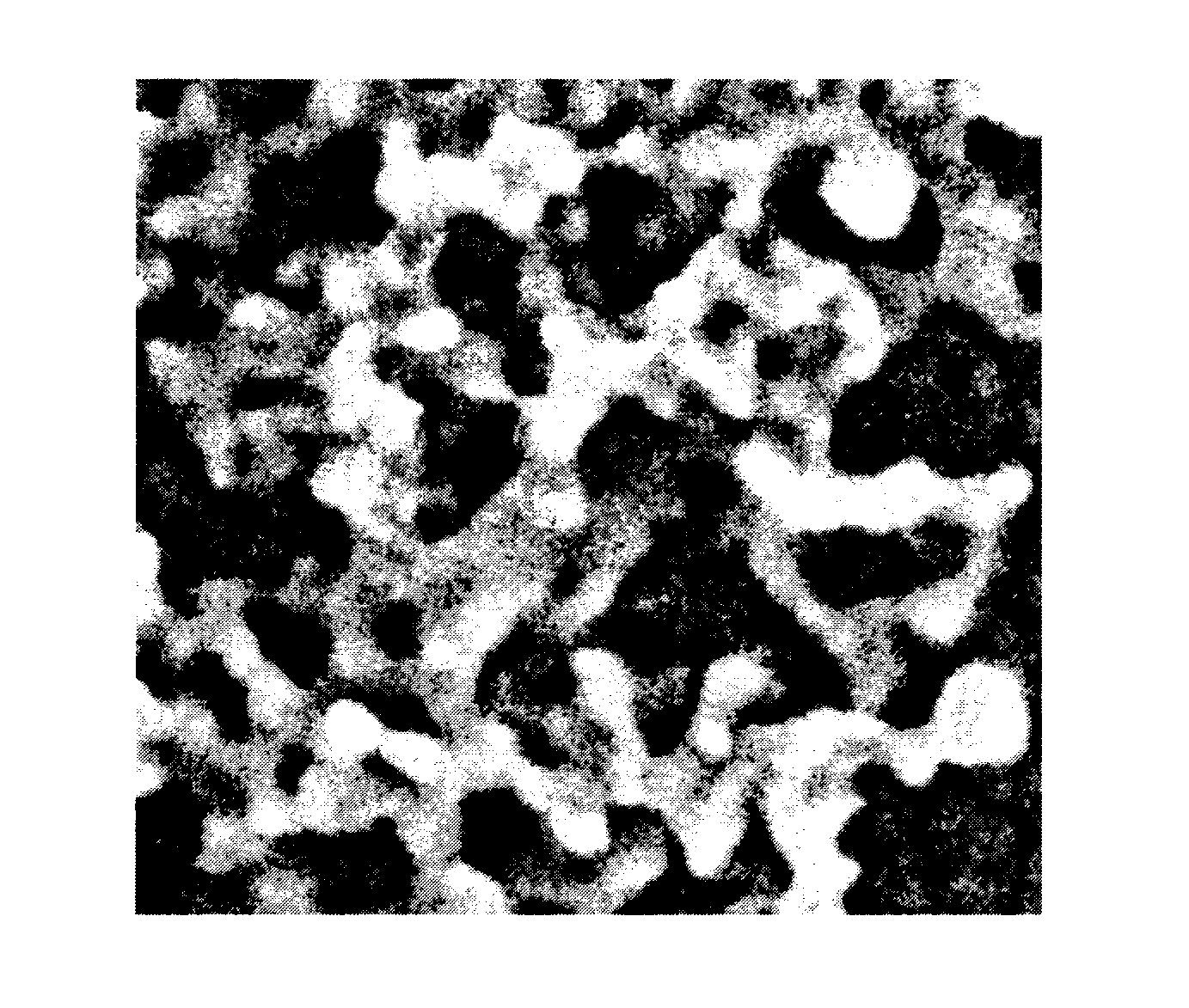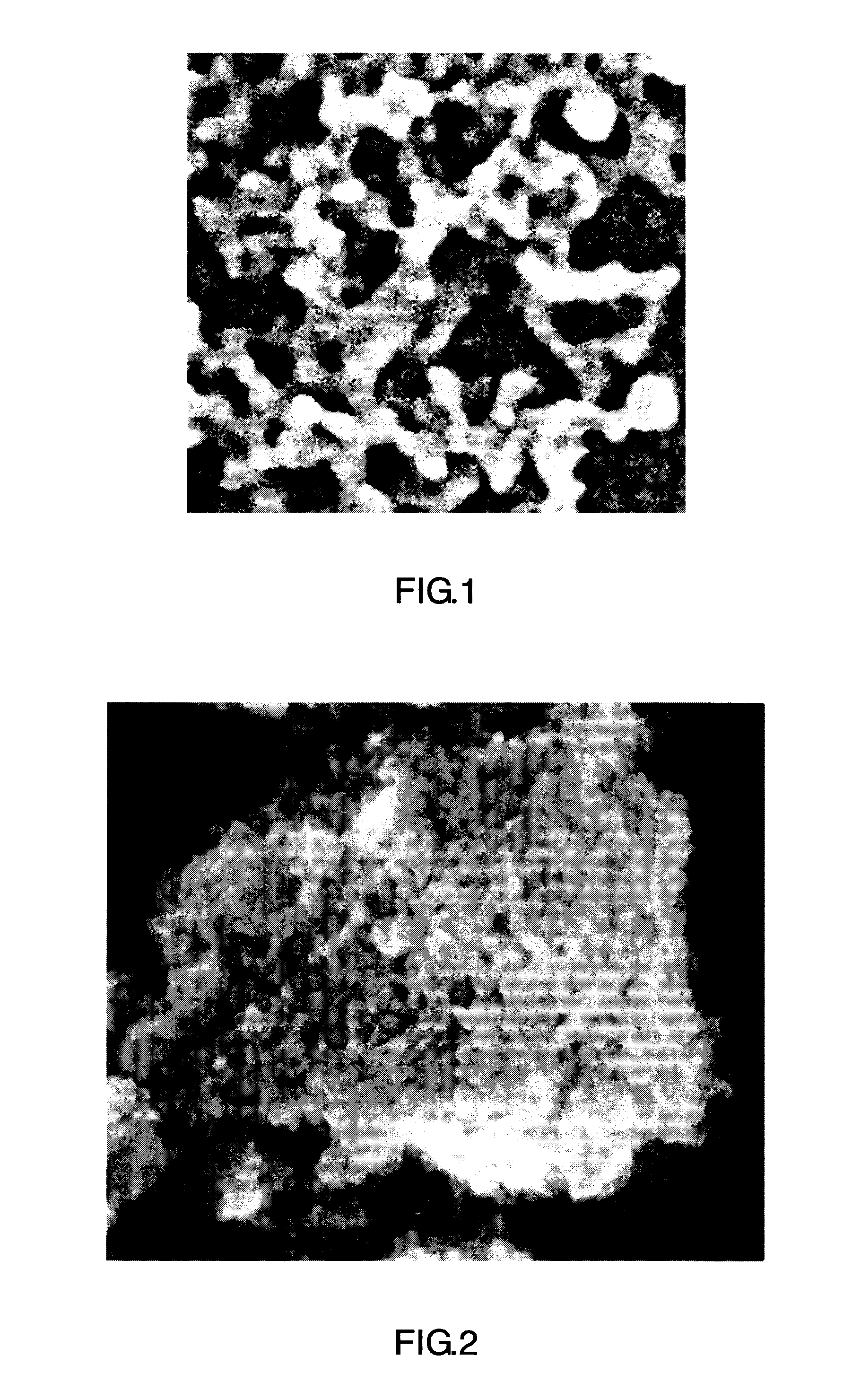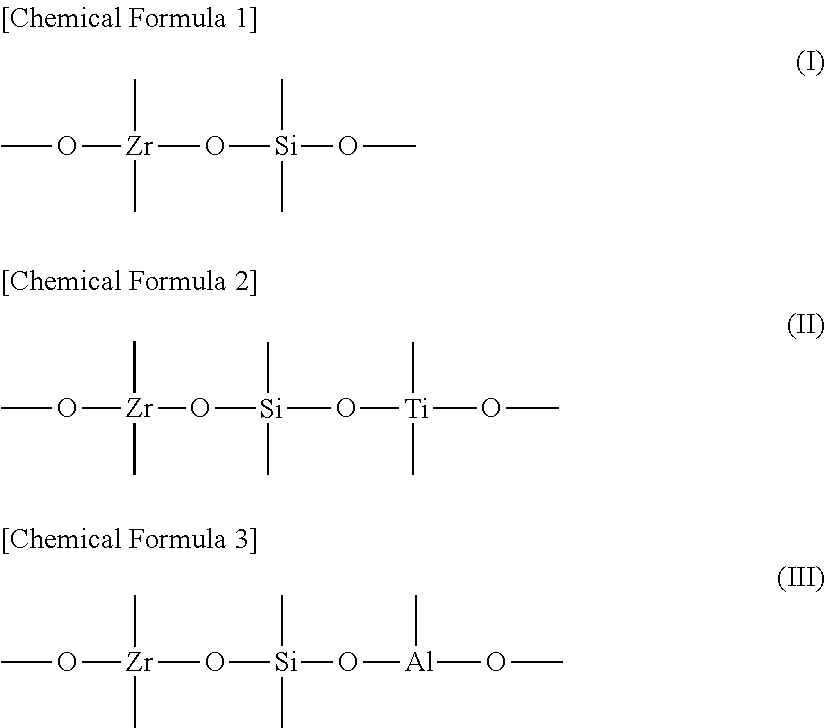[0038]The silica-based fine particles mean fine particles containing 80 mol % or more of SiO2 in terms of oxides. The components other than SiO2 are not particularly limited as long as they do not impair the advantageous effects of the present invention. Examples of the components include TiO2, ZrO2, Al2O3, and Na2O. Preferably, the content of SiO2 is 90 mol % or more. It is preferable that the content of SiO2 be substantially 100 mol % (that is, the content be 100% except for unavoidable impurities). Preferably, the average particle size of the silica-based fine particles is 2 to 300 nm. When the average particle size is less than 2 nm, the resulting cured product of the dental composition may have insufficient mechanical strength. When the dental composition containing the silica-based fine particles having an average particle size of more than 300 nm is used to restore teeth, the cured product may have insufficient surface smoothness and gloss after polishing. The average particle size of the silica-based fine particles can be determined by the
dynamic light scattering method. For example, 7.0 g of an
aqueous dispersion sol containing silica-based fine particles (having a
solid content of 20% by weight) is placed in a cylindrical stainless steel
cell with a size of 3 cm length, 2 cm width and 2 cm height equipped with a transmission window, and the
particle size distribution is measured using an
ultrafine particle size distribution analyzer of
dynamic light scattering type (Model 9340-UPA150 manufactured by Honeywell). Thus, the average particle size can be calculated.
[0039]The
oxide that covers the surface of the silica-based fine particle contains a
zirconium atom, a
silicon atom, and an
oxygen atom. The oxide further may contain a
titanium atom, an aluminum atom, etc. This
oxide coating on the surface of the silica-based fine particle approximates the
refractive index of the amorphous powder (B) to that of the polymerizable monomer (A). As a result, the dental composition exhibits excellent transparency and an excellent light
diffusion property, and the cured product of the dental composition has high mechanical strength.
[0040]Specific examples of the structure of the oxide are shown below.
[0041]In the amorphous powder (B), the
oxide coating may cover each of the silica-based fine particles, or may cover a plurality of silica-based fine particles. In the preferred embodiment, the
oxide coating covers a plurality of silica-based fine particles. In this case, the amorphous powder (B) has a structure in which the oxide
coating of a silica-based fine particle and the oxide
coating of a neighboring silica-based fine particle are connected with each other. In this regard, it is preferable that the amorphous powder (B) have a structure in which the oxide
coating of a silica-based fine particle and the oxide coating of a neighboring silica-based fine particle extend and are connected with each other. In the case where the silica-based fine particles are connected through the oxide coatings in the manner as described above, the silica-based fine particles are bonded to each other more strongly than they are aggregated together by
intermolecular force. Accordingly, the use of this amorphous powder (B) in the dental material further increases the mechanical strength. Furthermore, as the dental material is abraded, the connecting portion between the oxide coatings is ruptured and thereby only a part of the amorphous powder (B) comes off. Therefore, the use of this amorphous powder (B) also increases the surface smoothness and gloss after polishing. From the viewpoint of the surface smoothness and gloss after polishing, it is preferable that, in the outer shape of this connection structure, the connecting portion between the oxide coatings be thinner than a portion where the silica-based fine particle is covered by the oxide coating. In other words, it is preferable that the thickness of the connecting portion between the oxide coatings be smaller than the sum of the largest dimension of the silica-based fine particle in the thickness direction and the thicknesses of two portions of the oxide coating of that particle.
[0042]It is more preferable, in the structure of the amorphous powder (B), that one oxide coating of a silica-based fine particle is connected with a plurality of oxide coatings of neighboring silica-based fine particles. In this case, the amorphous powder (B) may have a structure, such as a
tetrapod structure, or a star structure, in which a plurality of silica-based fine particles are connected through the oxide coatings to one silica-based fine particle with the one silica-based fine particle being placed in the center of the structure, or may have a branched three-dimensional
network structure, in which the plurality of silica-based fine particles connected to one silica-based fine particle through the oxide coatings are connected further with other silica-based fine particles. In this three-dimensional
network structure, silica-based fine particles are present at the ends of the branches and the
branch points. Silica-based fine particles may be present at positions other than the ends of the branches and the
branch points. It is particularly preferable that the amorphous powder (B) have a
porous particle structure in which the oxide coatings are connected to each other to form an aggregate of the silica-based fine particles covered with the oxide coatings. FIG. 1 and FIG. 2 show SEM micrographs of examples of the amorphous powder (B) used in the present invention.
[0043]The thickness of the oxide coating may be determined appropriately in consideration of the particle size of the above silica-based fine particles, the thickness of the surface-treated layer to be described later, and the particle size of the amorphous powder (B) to be described later.
 Login to View More
Login to View More 


